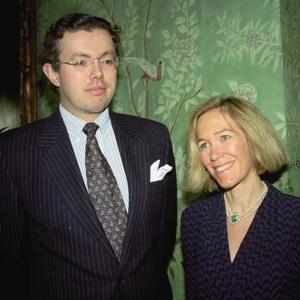Tetra Pak heir Hans Kristian Rausing recently made headlines after leaving his 48-year-old wife’s dead body in their London mansion for two months. Drugs were found in her system post-mortem, including cocaine. Although many believed his late wife had knowledge of the unsolved 1986 murder of Swedish prime minister Olof Palme, Hans Kristian Rausing has dismissed those reports. Rausing called the claim a “baseless conspiracy theory.”
Swedish prosecutors said that Eva Rausing had contacted them before her death this past summer, but did not disclose what information she had provided or whether it was relevant to the murder.
It was believed that Eva Rausing had contacted him before her death and claimed to know, via information obtained from her husband, that a Swedish businessman had had Palme killed because Palme posed a threat to his business. She said that she believed she knew where the murder weapon was.
Palme was shot dead by an unknown gunman on the evening of February 28, 1986, shortly after leaving a movie theatre in central Stockholm. The murder has never been solved over two-and-a-half decades.
Since Sweden abolished its 25-year statute of limitations on murder in 2010, the investigation can still continue.
Christer Pettersson, a petty criminal, was convicted of the crime in July 1989 after Palme’s widow identified him in a line-up, but he was acquitted on appeal due to lack of evidence. Pettersson has since died in 2004.
Should there be a statute of limitation on murder? What kinds of issues are presented during line-ups? Should the line-up process be altered in the United States?
For more information, see: The New York Post.

“Getting away with murder.” It is a saying people use everyday and I think serves as a foundation of the fear that comes with imposing a statute of limitations on murder. While allowing a criminal to get away with their crime is obviously something that should not happen, I think Hollywood and the literary world have warped our sense of crimes and the actual investigative process. A statute of limitation limits how far police can go in investigating crimes. If they have a person of interest in a crime but cannot gather the necessary evidence, is it fair that they are able to question him/her and investigate their lives until that person dies? I think 25 years should be enough time for police and prosecutors to gather evidence, witnesses etc. against a defendant. Perhaps there could be an expectation in the statute for “extraordinary” evidence after 25 years such as a criminal confession.
Line-ups also present problems. New studies have emerged in recent years discrediting eyewitness testimony due to the way our bodies and minds react to certain situations. While an eyewitness to an crime is still a high burden to challenge for the defense, line ups are different. Most line-ups occur soon after a crime where the victim may be in a unbalanced psychological state and may wish to identify someone so they feel safer. Leading questions by police/prosecutors also present problems as does a potential lack of counsel for the accused. The identification will also start a process for police officers to focus their attention on that one person, and not keep investigating the possibility of others.
I came to know about the death of former prime minster Palme after reading “The Millennium Trilogy” written by Stieg Larsson this past summer. Many of you will know recognize the first book in the series – The Girl with the Dragon Tattoo. Larsson’s talent was widely recognized only posthumously and successive, unfinished manuscripts still remain with his loved ones. Larsson was a citizen of Sweden and a political activist; many would say that ideologically, he leaned quite far to the left. His books, in addition to their gripping plots, are known for their non-fictional components. A great deal of the storyline takes place in Stockholm, an area that will probably be associated with the unsolved murder of Olof Palme indefinitely. While I haven’t done much independent research on Sweden, the books did educate me somewhat on the political divide and corruption that existed at the time of the murder. Swedish citizens are still plagued by the unanswered questions linked to this murder in terms of who was responsible. Motive, on the other hand, is probably a much easier piece of the puzzle to fit into place. Olaf was known for his polarizing political stances, both within Sweden and abroad. He spoke critically about American involvement in the Vietnam War and our country’s use of nuclear weapons. The point is, finding the perpetrator would be nearly impossible simply because he made his presence and his critiques known world-wide. To answer Taylor’s question, I think the search would be further impaired given the number of years that have passed since the murder occurred in 1986. Studies have demonstrated that various types of evidence can only be relied upon for a certain number of years; the sustainability of evidence differs depending on what it is. Should we let a murder go unsolved and leave questions unanswered simply because the evidence trail is probably cold? There are a number of issues weighing in on this. Every family deserves an answer, an explanation for who caused the death of their loved one. On the other hand, every police force and investigative unit would be buried by its inefficiency if a task force was assigned to every unsolved murder which dated back two decades ago. Taylor poses an interesting question, one that has great arguments on both sides. I don’t have the answer but I will suggest that everyone read the Millennium Trilogy. Larsson was a literary genius and Olaf Palme’s story is an intriguing one.
For further reading on the reliability of eye-witness testimony: http://www.psychology.iastate.edu/~glwells/Wells_articles_pdf/Manson_article_in_LHB_Wells.pdf
For more on Larsson and the Trilogy: http://www.stieglarsson.com/